Getting around Halifax, Halifax Citadel, the waterfront
In our digital era, paper brochures and guides seem out of date. It is true but in part. First, not all picturesque parts of nature have access to the Internet. Secondly, sometimes careful reading a travel guide, can save you a little cash.
So studying the guide about Halifax, we found a coupon for a 20$ discount in Best Western Plus Dartmouth Hotel & Suites. This predetermined where to stay in the capital of Nova Scotia.
Address: 15 Spectacle Lake Drive Dartmouth, Nova Scotia B3B 1X7
In fact, the booking was not so smooth. The receptionist saw that kind of coupons for the first time. The manager who came to the rescue confirmed the discount validity.
Once in the room, we grabbed dinner and checked up the weather for the following days. No good news! The rain was imminent and was rushing towards us. The following day was the last sunny one.
In the morning after breakfast, we went for a little capital sightseeing.
Halifax is the largest capital on the Atlantic coast of Canada. The population is about 500,000. Few people know the official name of the capital is the Halifax Regional Municipality (HRM).
As usual, we began sightseeing with a small walk.
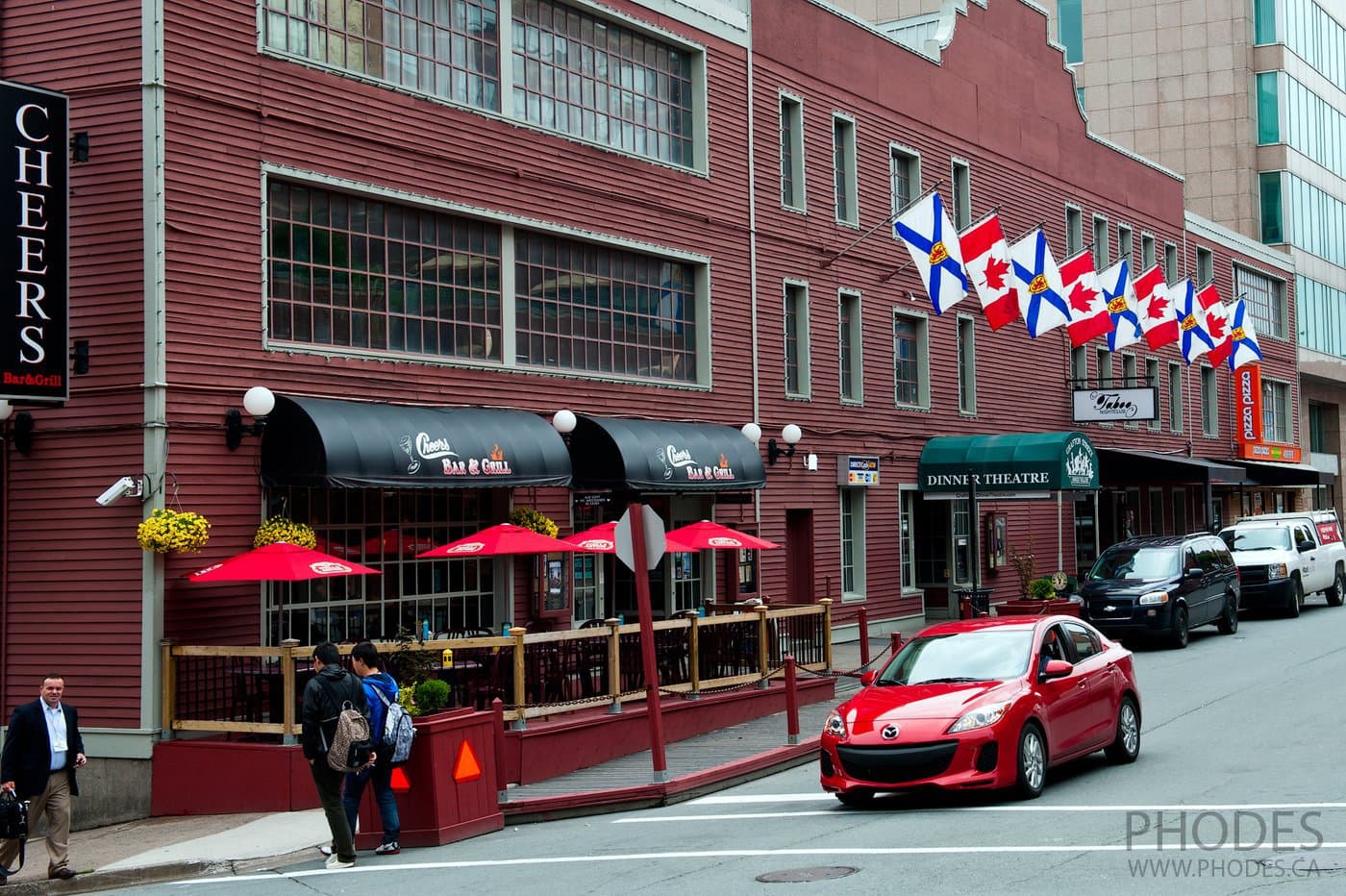
Halifax City Hall is the National Historic Site of Canada.
Address: 1841 Argyle St, Halifax, NS B3J 3A5

One of the main attractions in Halifax is the Halifax Citadel.
Website: https://parks.canada.ca/lhn-nhs/ns/halifax
Address: 5425 Sackville Street Halifax NS B3J 3Y3
It is a national historic site as well. Canadian monuments of culture and history are managed by the organization of Parks Canada. Therefore, for Vitali, the entrance was free of charge.
That needs to be explained. After the citizenship ceremony, new Canadians used to obtain one-year pass giving free access to all parks and historic sites of Canada.
In 2013, Vitali had this free pass. We do not know whether the same tradition exists to this day though.
We arrived at the Citadel Hill just in time to see the ceremony of changing guards.
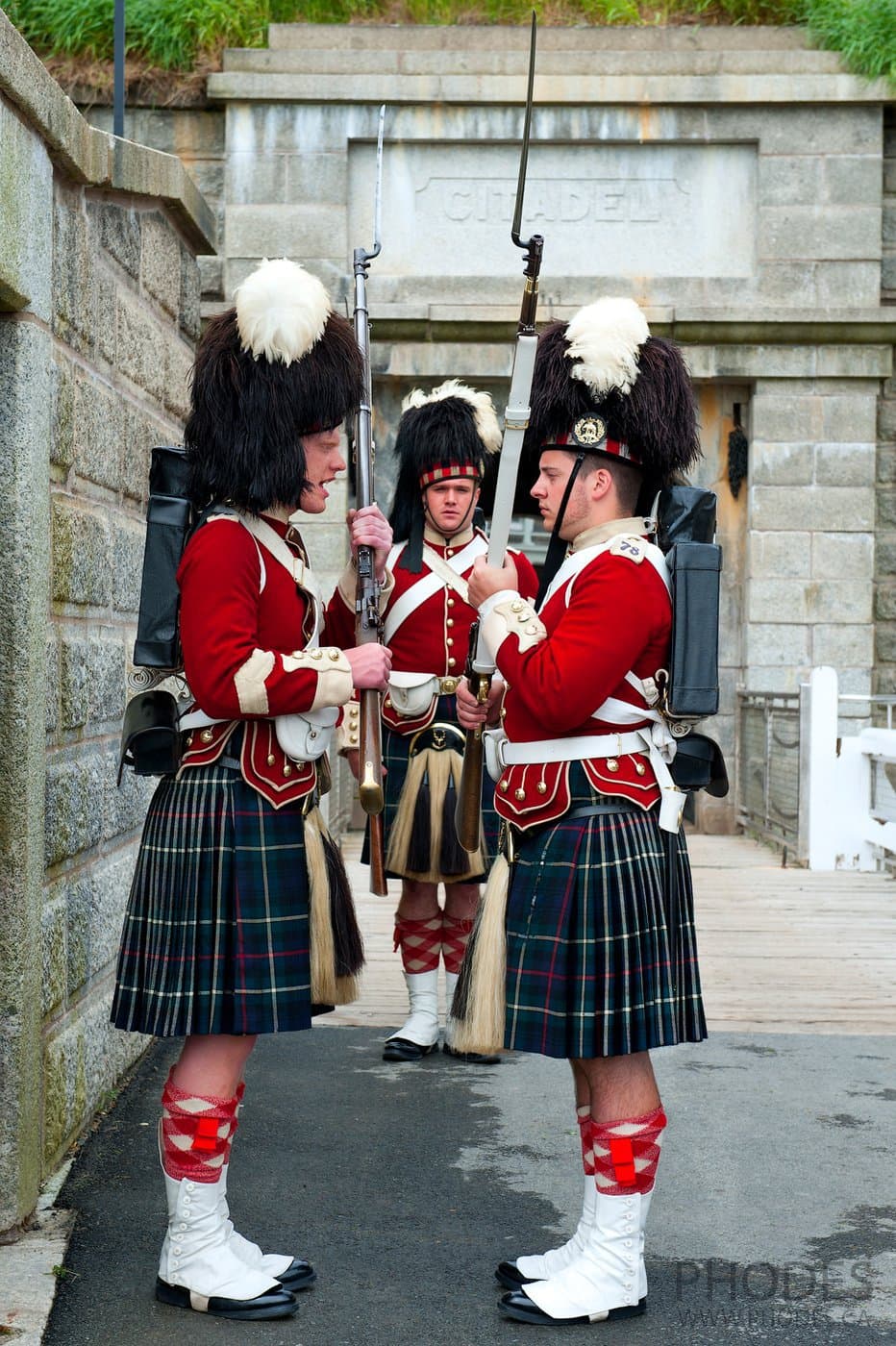
Inside you can see all kinds of shows representing Canadian military history.
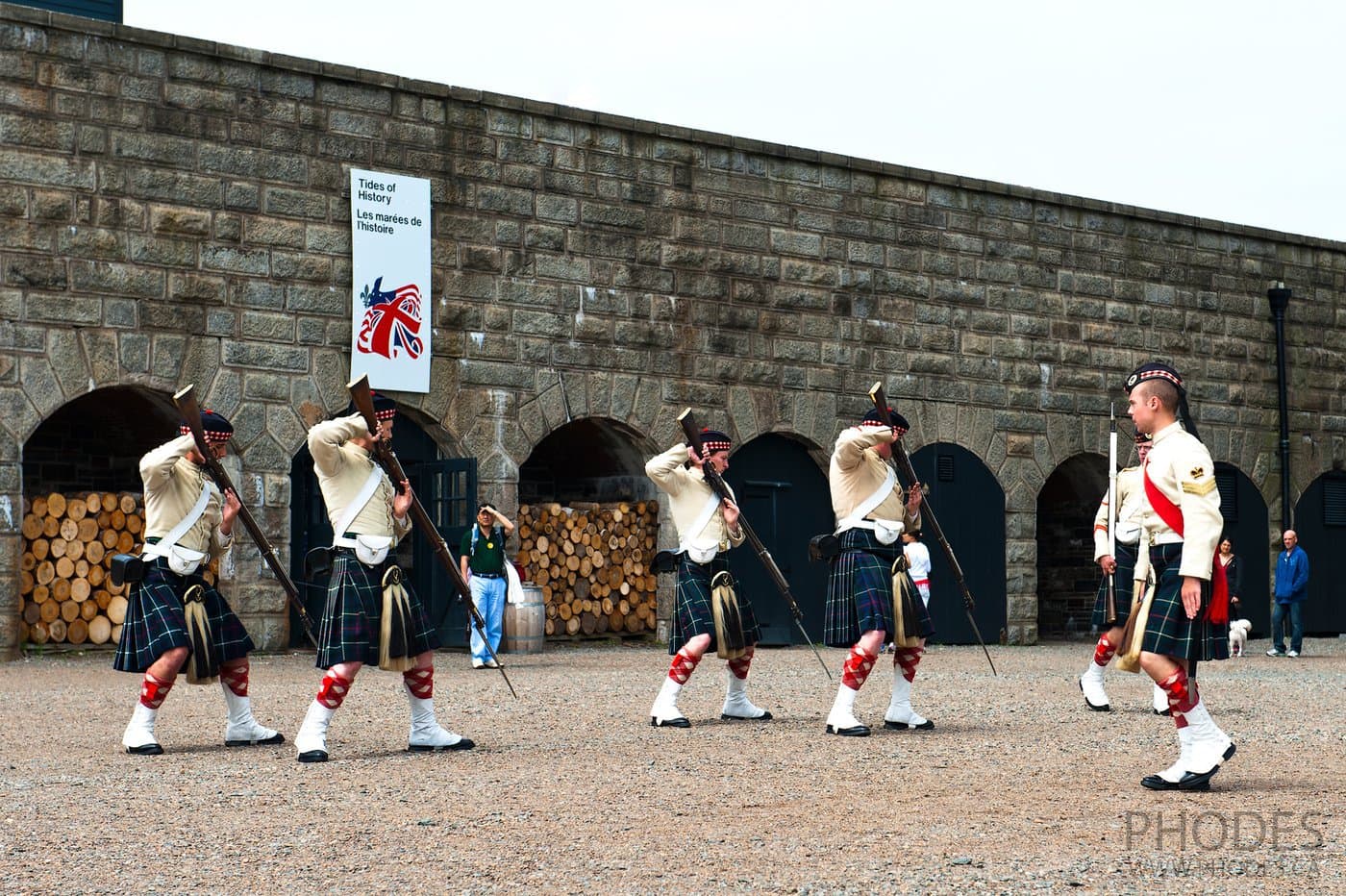
It was a nice hot day. We felt sorry looking at the actors (students of local universities) in heavy clothes. For example, like this piper.
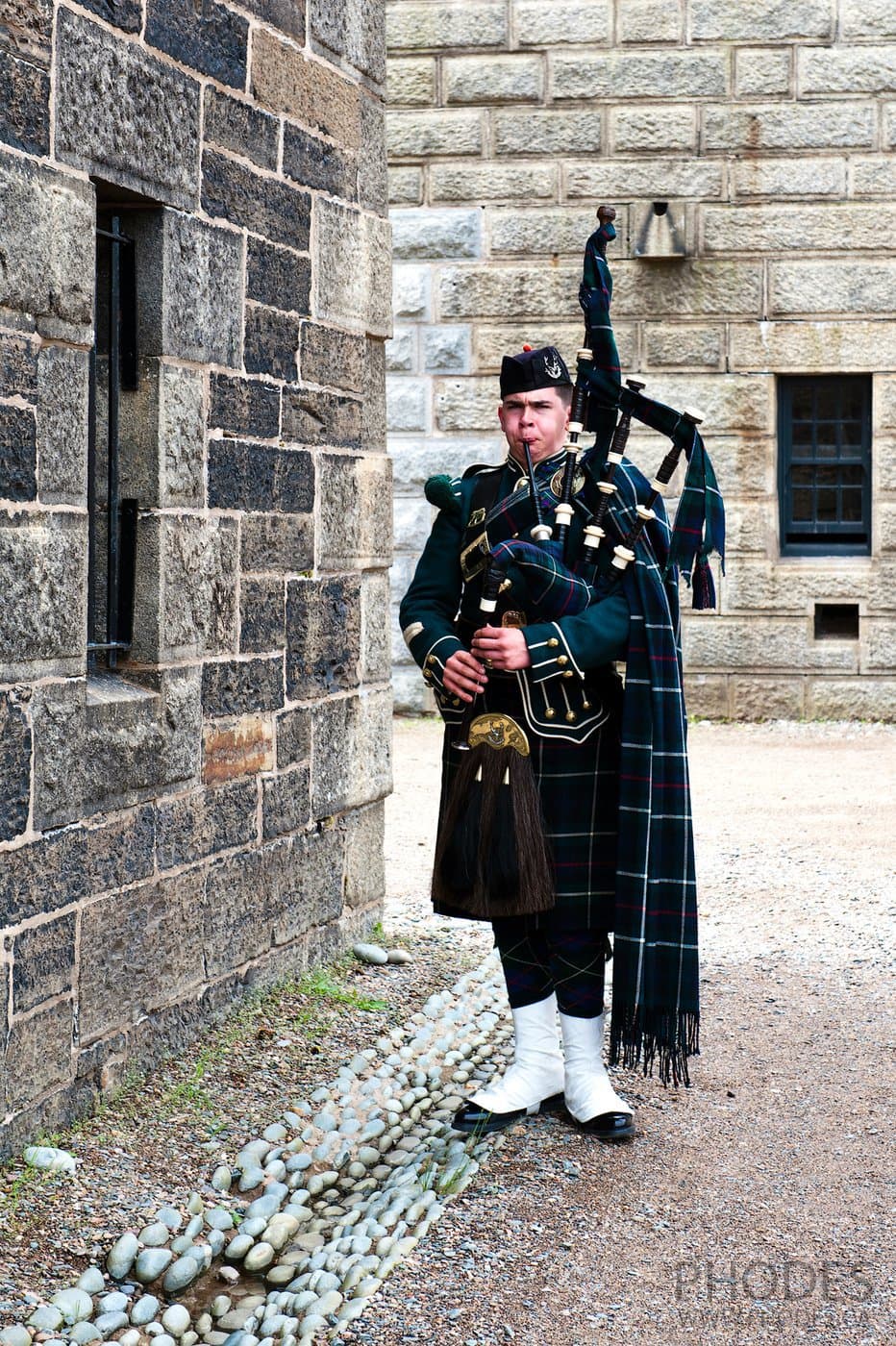
He was standing in the shadows near the wall and blew with all his strength into the bagpipes. To our question, why he was near the wall, he answered that they set up the instrument in this way.
A funny story about the construction of the Citadel Clock Town Clock Tower…
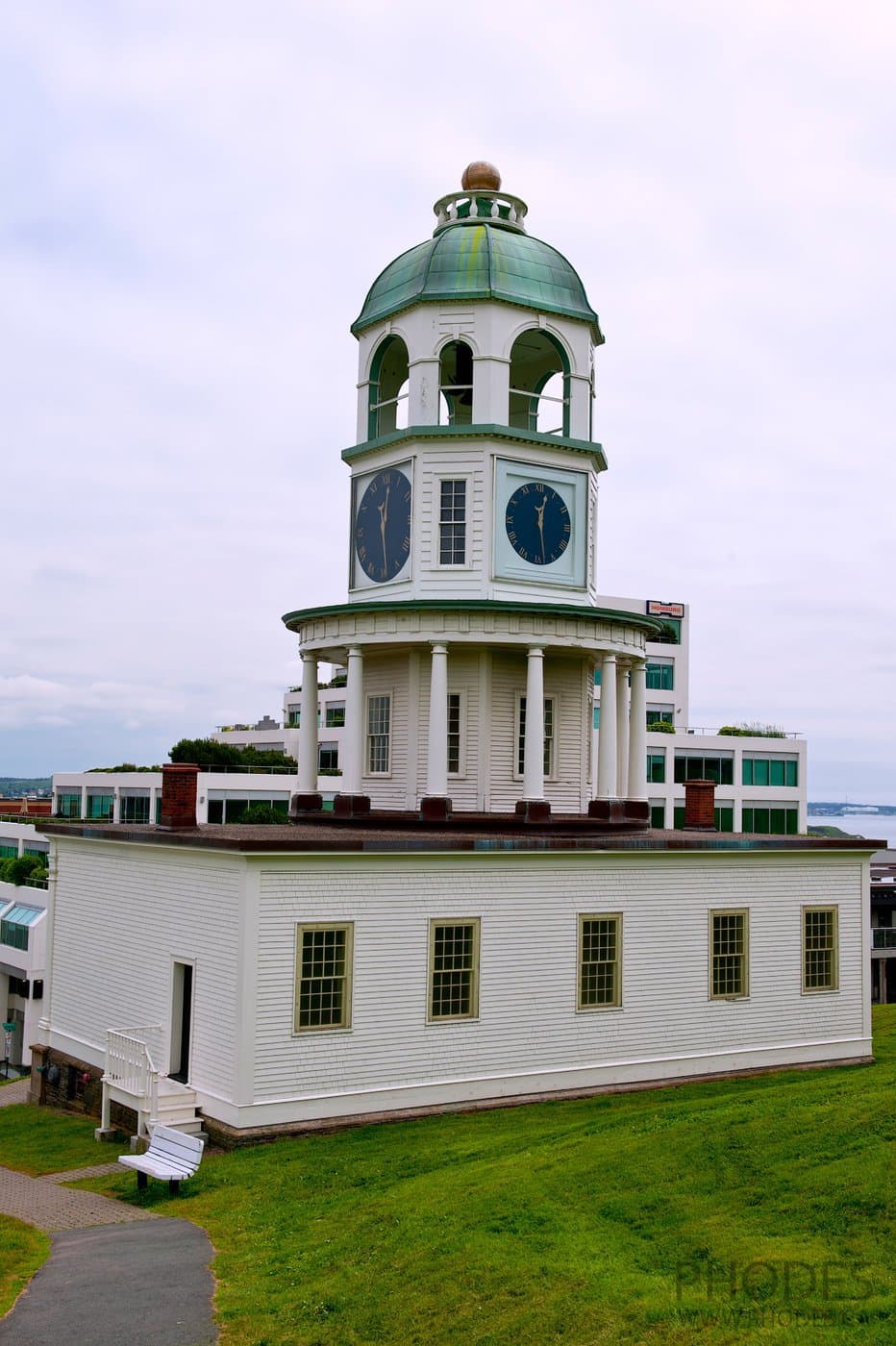
The clock was completed in 1803 by the order of Prince Edward, Duke of Kent who wished to resolve the tardiness of the local garrison. The clock has kept punctual Halifax ever since. If you look carefully at the dial, you can see that the Roman numeral four is represented as IIII instead of IV. Some historians tend to explain that it appeals to balance and aesthetic symmetry.
Halifax is also a port, a gateway to North America.
In its history, the port of Halifax received about 1 million immigrants. In 1912, the port deployed a rescue mission after sinking of the Titanic. In 2009, the port welcomed its two-millionth passenger.

You can find The Wave statue on the Halifax waterfront beside Nova Scotia Visitor Information Center.
Address: 1655 Lower Water Street
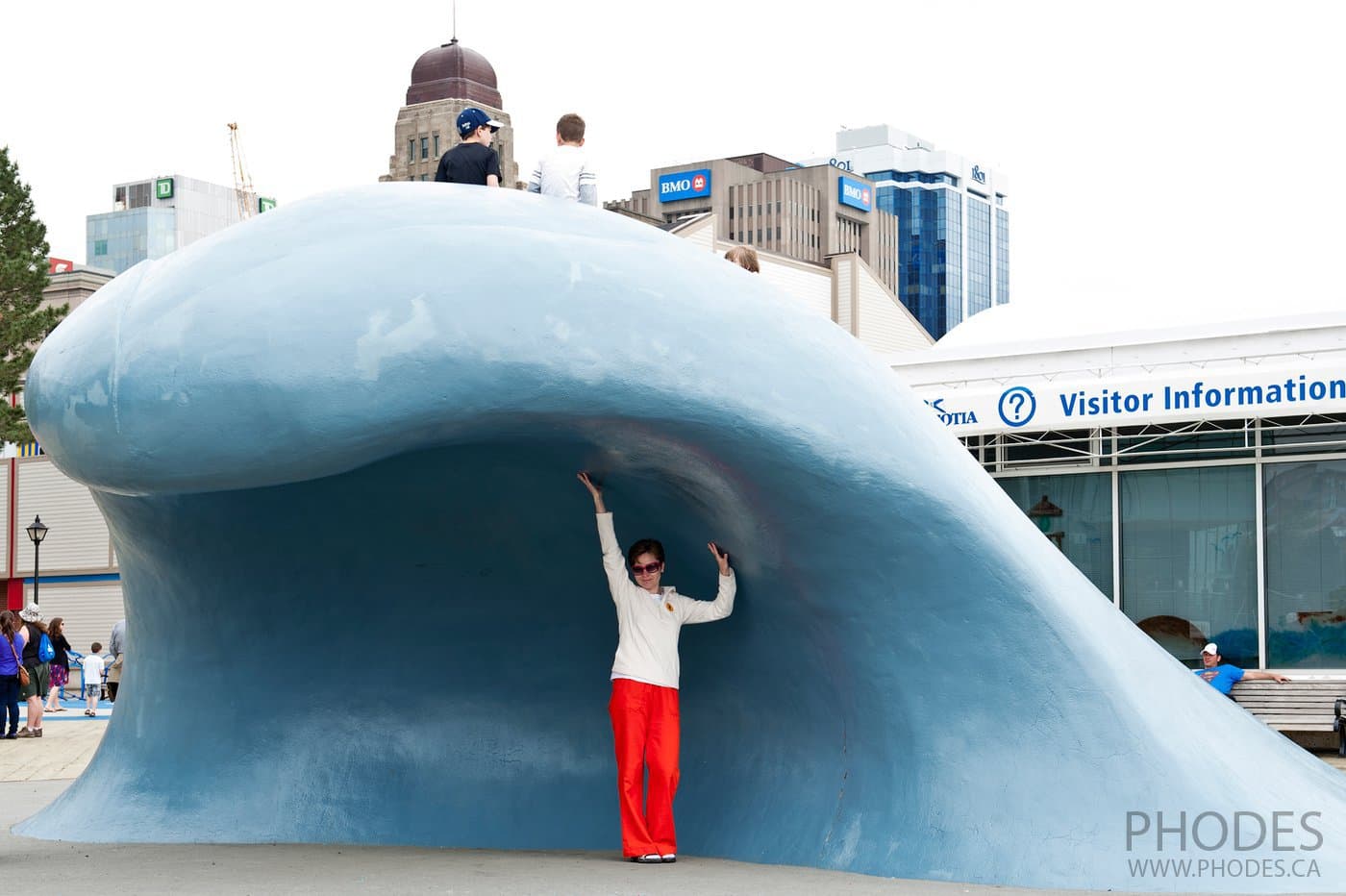
Peggy’s Cove and the lighthouse
Try to start googling “Peggy”, you will definitely get Peggy’s Cove in the suggestions.
Peggy’s Cove is one of the most photographed places in Canada.
There was no way for us to miss it.
Admiring the surrounding expanse and huge rocks on the coast, here you can feel the full power of the Atlantic Ocean.
We did not know about that place before our trip, we went to Peggy’s Cove because it is 30 minutes from Halifax. Definitely, Peggy’s Cove is the “must go” place.
Website: https://www.peggyscoveregion.com/
Address: Peggys Cove, NS B3Z 3S1
We spent there only one hour and took one of our favorite picture on that trip. Later we got printed and framed that Peggy’s Cove image on a big size. Since then it is hanging on the wall and reminds us of our first trip to the Maritimes.
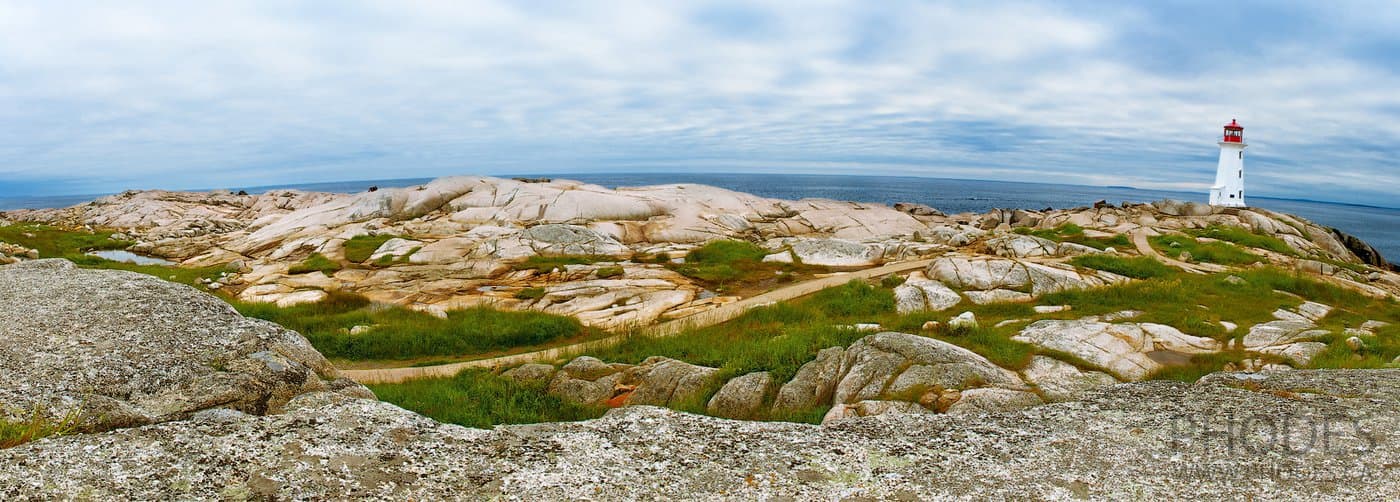
Lunenburg
We were short of time. We hurried to another no less famous port town of Lunenburg. Being a national historic site of Canada, Lunenburg is also under the protection of UNESCO.
The most recognizable feature is Lunenburg colorful houses.
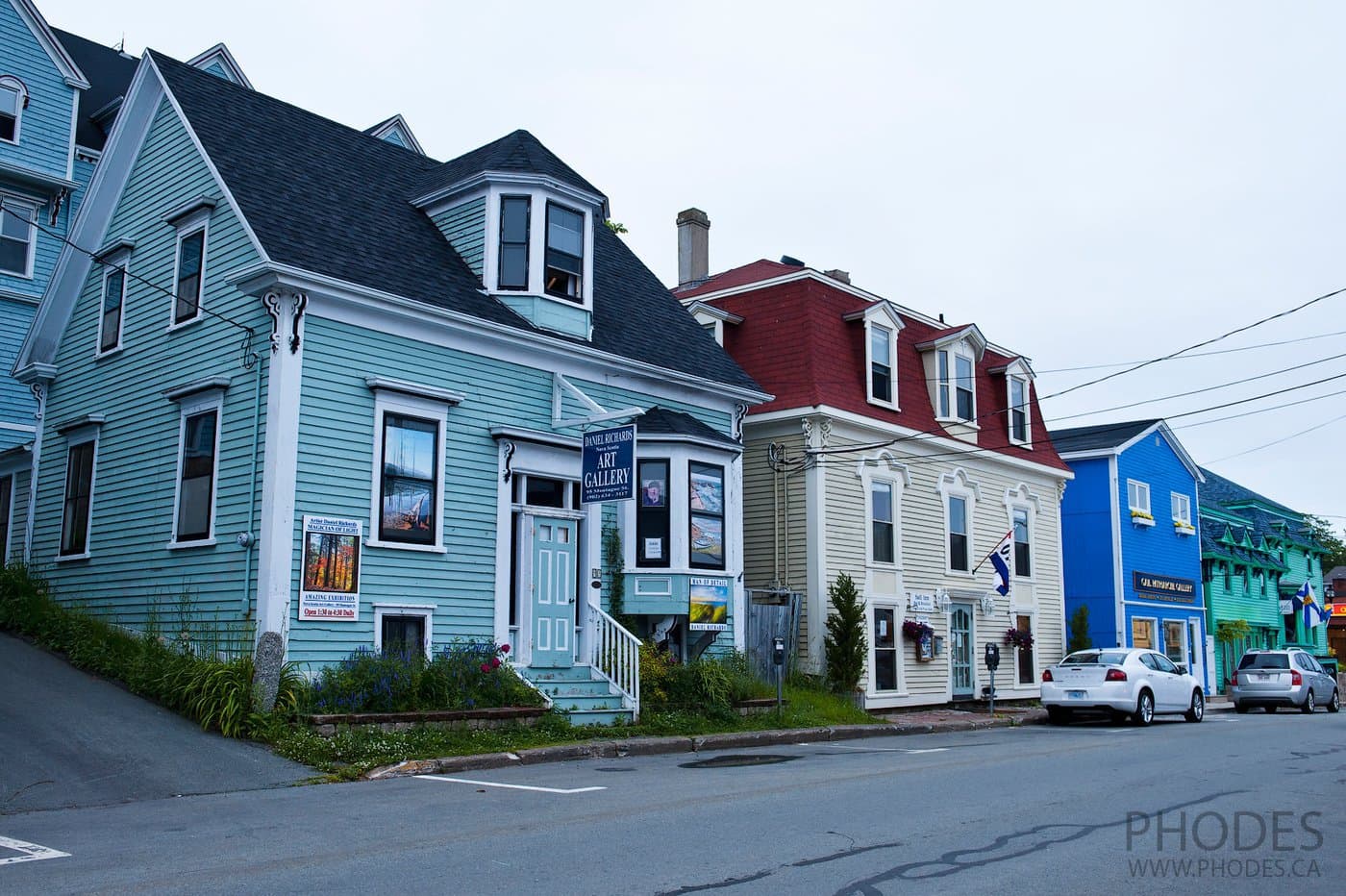
We walked around the town a little bit. It was getting dark.
Back home to Montreal
We had to drive 200 km (124 miles) to the town of Digby on the local roads with a maximum speed of 70km/h (50 mph). Moreover, a thick fog descended in the darkness. The fog lights helped a little, but visibility was close to zero. At some point, we had a car ahead of us. We tried to keep up with our “guide star”, but at the same time not to blind it.
On the way, we booked a motel in the town of Digby and warned that we will be around 11 pm.
Early in the morning, we took a ferry from Digby, Nova Scotia to Saint John, New Brunswick.
Address: Digby, Nova Scotia Terminal
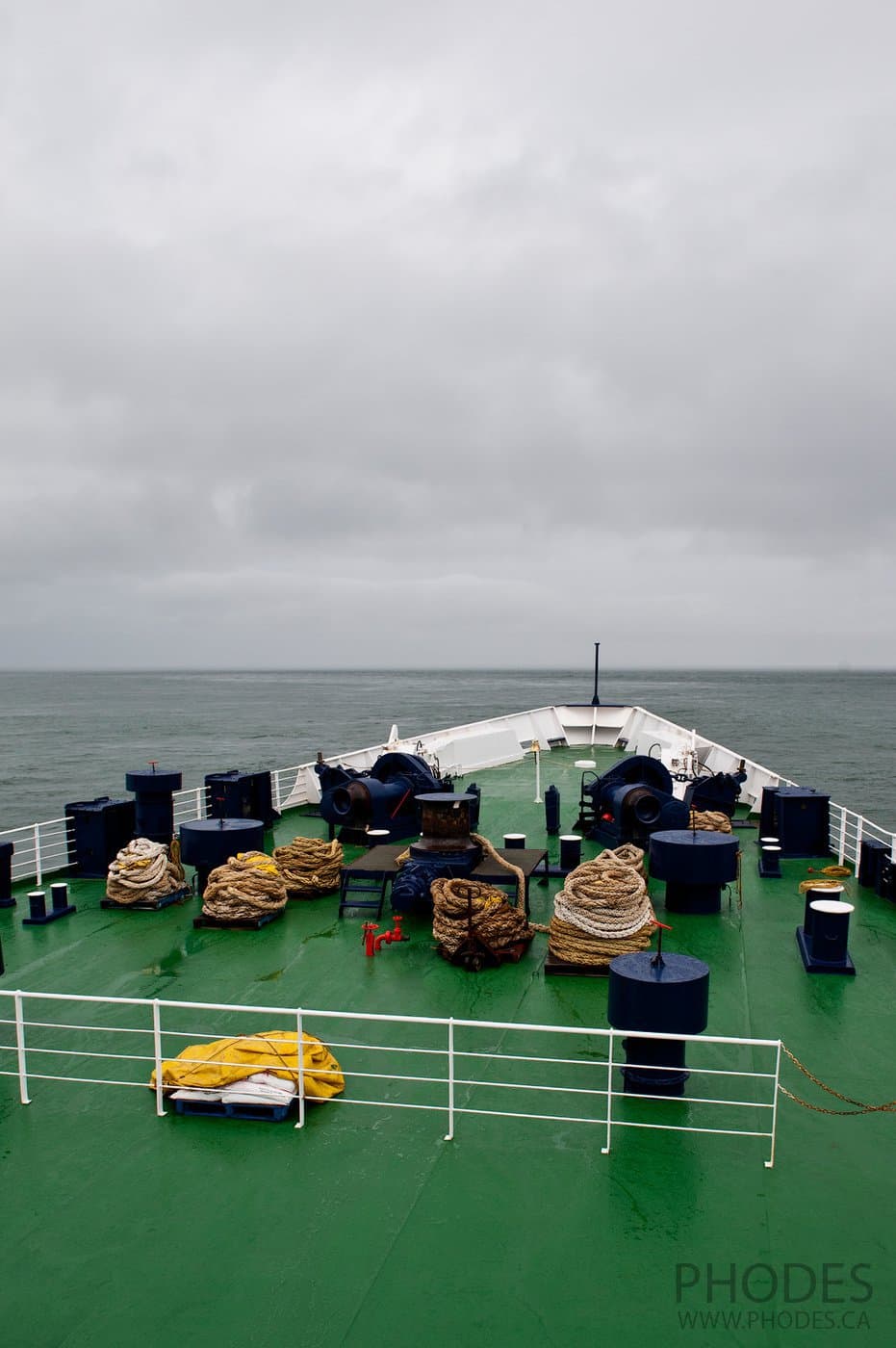
This was our last photo on that trip.
Ahead of us, there was 950 km rainy road to Montreal.
It is not a happy end, you will say… As we said in our first New Brunswick post “the weather did not allow us to implement all our plans.”
However, we get inflamed with the desire to discover this huge country named Canada!
This post is part of our first long trip to the Canadian Maritimes. You can read other articles from that trip:
New Brunswick | Prince Edward Island | Nova Scotia – Day 1 | Nova Scotia – Day 2